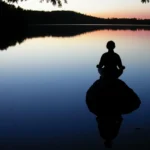The Interconnection Between Creativity and Mindfulness Practices
In today’s fast-paced world, the concepts of creativity and mindfulness often seem worlds apart. However, recent studies highlight a fascinating interplay between the two, revealing that mindfulness not only enhances our ability to engage creatively but also deepens our appreciation of the creative process itself. By cultivating mindfulness practices, individuals can unleash untapped creativity while fostering a richer inner experience.
Understanding the essence of creativity begins with recognizing it as a natural human capacity. Creativity can manifest in various forms, from artistic endeavours to problem-solving in daily life. It’s an essential skill that can be nurtured and expanded through intentional practices. Mindfulness, on the other hand, encourages presence and awareness, helping us to observe thoughts and feelings without judgment. This non-judgmental awareness allows us to tap into our creative potential more freely.
Several vital aspects connect creativity and mindfulness in profound ways:
- A focus on the present: Mindfulness encourages living in the moment, which is essential for creativity. When we are fully present, whether in nature or while brainstorming ideas, we open ourselves up to a vast array of stimuli and inspiration. This heightened awareness leads to a greater flow of creative thoughts and ideas.
- Reduction of mental clutter: Mindfulness practices, such as meditation and breath exercises, help reduce distractions and mental noise. By decluttering the mind, individuals can create a space conducive to innovative thinking. This clarity can lead to breakthroughs in creative projects.
- Emotional regulation: Creative endeavours often stem from our emotions. Mindfulness helps us recognize and process these feelings, allowing for a more authentic creative expression. When we can channel emotions positively, our creative output reflects genuine experience rather than superficiality.
- Enhanced observation skills: Mindfulness hones our ability to notice details that we may usually overlook. This heightened observation sparks inspiration, enabling us to extract creative ideas from everyday experiences. A simple walk in the park can become a treasure trove of ideas when viewed mindfully.
Integrating mindfulness into the creative process can take many forms. Here are several practical strategies to fuse these two powerful elements:
- Meditative brainstorming: Set aside specific time to meditate before brainstorming sessions. Allow thoughts to flow without judgment. This can clear the mental space and may lead to unexpected insights.
- Mindful observation: Engage in activities like drawing or journaling while focusing on sensations, feelings, and thoughts that arise in the present moment. This practice not only fuels creativity but can also lead to personal revelations.
- Nature immersion: Take creative endeavours outside. The natural world inspires a sense of wonder, allowing mindfulness to thrive among the sights, sounds, and feelings of nature.
- The practice of gratitude: Regularly reflecting on what you are grateful for can shift your perspective and enhance creativity. Try keeping a gratitude journal and note things that inspire you; the act of reflection can catalyze creative thinking.
Scientific research supports the connection between these practices, showing that individuals who engage in mindfulness report higher levels of creative thinking and problem-solving capabilities. For example, studies utilizing divergent thinking tasks, which require the generation of multiple solutions to a problem, demonstrated that meditators performed significantly better than non-meditators. This indicates that the benefits of mindfulness extend beyond mere relaxation; they actively enhance cognitive functions related to creativity.
Creative professionals, educators, and even corporate teams can incorporate mindfulness techniques to unlock potential and enhance performance. Companies that prioritize employee well-being and creativity often facilitate mindfulness workshops and creative retreats, enhancing both collaboration and innovative output.
Mindfulness invites one to embrace the journey—the exploration of thoughts and emotions—rather than fixating solely on outcomes. When we adopt this mindset, we become more forgiving of ourselves during the creative process, alleviating pressure and fear of judgment. This liberating approach is vital, particularly in a culture that often idolizes perfection.
Creativity within the framework of mindfulness might be the key to evolving not only as individuals but also as a society that values holistic experiences and innovative breakthroughs. The interplay of these elements fosters a space where creative potential can genuinely flourish, enriching our lives both personally and collectively.
How Mindfulness Enhances Creative Problem-Solving Skills
Creativity often feels like a mysterious process, one that comes and goes, influenced by a variety of factors. One frequently overlooked aspect that plays a significant role in enhancing creativity is mindfulness. Mindfulness is the practice of being present and fully engaged in the moment without judgment. By embracing mindfulness, individuals can develop sharper creative problem-solving skills that lead to innovative solutions and ideas.
Understanding Mindfulness
At its core, mindfulness involves focusing attention on the present moment. This practice can help reduce stress and anxiety, which are known to hinder creative thinking. When a person practices mindfulness, they learn to observe their thoughts and feelings without becoming overwhelmed by them. This allows for a more transparent state of mind, which can foster the creative process.
The Connection Between Mindfulness and Creativity
Numerous studies suggest a strong connection between mindfulness practices and enhanced creativity. Here’s how mindfulness influences creativity and problem-solving:
- Expansion of Thought: Mindfulness can help break down mental barriers. When individuals practice being present, they open their minds to new perspectives and ideas that they might usually overlook. This expansive way of thinking is crucial for problem-solving.
- Enhanced Emotional Regulation: Mindfulness helps individuals manage emotions more effectively. Being able to regulate stress and anxiety allows for clearer thinking, which improves the ability to generate creative solutions during challenging situations.
- Increased Focus and Concentration: Regular mindfulness practice improves one’s attention span. With better focus, individuals can delve deeper into creative tasks without being easily distracted, leading to higher-quality output.
- Encouragement of Divergent Thinking: Mindfulness promotes an open mindset, fostering an environment where divergent thinking can thrive. This process is crucial for generating multiple ideas and unique solutions to complex problems.
Practical Techniques for Enhancing Creativity Through Mindfulness
Mindfulness in your daily routine can significantly amplify your creative problem-solving skills. Here are several practical techniques you can use:
- Mindful Breathing: Spend a few minutes each day focusing on your breath. Inhale deeply through your nose, and exhale slowly through your mouth. This simple yet powerful technique calms the mind and prepares it for creative thinking.
- Guided Imagery: Use visualization techniques to imagine different scenarios related to a problem you’re facing. Allow your mind to wander freely and explore alternative solutions.
- Creative Journaling: Engage in free writing without worrying about grammar or structure. This helps in letting thoughts flow naturally and can often lead to surprising insights and ideas.
- Nature Walks: Spend time in nature and practice being mindful of your surroundings. Observing natural beauty can spark creativity and provide a fresh perspective.
Integrating Mindfulness into Work Environments
Integrating mindfulness into the workplace can create an atmosphere of innovation. Here’s how organizations can reap the benefits of mindfulness for improved creativity:
- Mindfulness Training Programs: Implement programs that teach employees how to practice mindfulness. This equips them with the tools to manage stress better and enhances overall well-being.
- Quiet Spaces: Create designated areas for employees to meditate or practice mindfulness. Providing a calm environment can facilitate clearer thinking and foster creativity.
- Flexible Work Hours: Allow employees the flexibility to engage in mindfulness practices during the workday. This can lead to increased productivity and creative output.
The journey to harnessing creativity through mindfulness requires patience and commitment. By nurturing a space that values present moment awareness, individuals and organizations alike can stimulate the creative process, transforming challenges into opportunities. In a world that increasingly demands innovative solutions, practising mindfulness is not just beneficial; it’s essential for effective problem-solving.
Creative Activities That Foster Mindfulness
Creative activities can serve as an incredible pathway to nurturing mindfulness, helping individuals become more present in the moment while also expressing themselves. Engaging in these practices not only promotes relaxation but also opens the door to deeper self-awareness and emotional balance. Here’s how various creative endeavours can encourage mindfulness.
One of the most accessible ways to foster mindfulness is through artistic expression. Simple activities like drawing or painting can shift focus away from stress and anxiety, allowing minds to immerse themselves in the act of creation. When individuals concentrate on colours, textures, and forms, they experience a meditative flow. This artistic immersion can evoke emotions, igniting a deeper connection with themselves.
Similarly, writing has become a powerful tool for mindfulness. Whether through journaling thoughts or crafting poetry, the act of putting pen to paper encourages individuals to slow down and reflect. Writing invites introspection, allowing for a deeper understanding of feelings and thoughts. Elements like stream-of-consciousness writing can help unlock subconscious thoughts, creating a unique blend of awareness and creativity.
Another fascinating avenue is music, which transcends barriers and cultivates mindfulness. Playing an instrument or even singing can be an entirely immersive experience. The rhythm, pitch, and lyrics demand focus, helping to draw attention from the chaos of daily life. Participants often find themselves lost in the moment, forgetting their worries as they channel feelings through sound.
Movement, too, plays a vital role in boosting mindfulness. Consider dance. Regardless of skill level, moving to music allows self-expression while grounding participants in the present. Each movement becomes a form of meditation—participants can focus on how their bodies feel, the rhythm of the music, and the emotions evoked. This synergy of movement and mindfulness builds awareness in a joyful package.
- Photography: Capturing moments through a lens demands attention to specifics—lighting, angle, and emotion contribute to a single shot. This focus encourages a mindful appreciation of the world.
- Culinary Arts: Cooking can be a meditative experience. Following a recipe, chopping ingredients, and savouring scents involve multiple senses, promoting presence in the culinary act.
- Crafting: Engaging in activities like knitting, sewing, or even pottery allows subtle meditation. The repetitive actions and focus required lead to a tranquil state of mind.
Moreover, the practice of gardening is often overlooked but can be immensely rewarding in cultivating mindfulness. Tending to plants and flowers allows individuals to connect with nature, paying close attention to the cycles of growth while observing changes in their environment. This connection grounds them, fostering an appreciation for life’s simple pleasures.
For those drawn to meditative practices, combining creativity with meditation can unlock new dimensions of mindfulness. Guided visualization through creative visualization techniques allows participants to envision their goals and emotions artistically. Pairing meditation with artistic expression invites deeper exploration of personal aspirations while maintaining focus on the present.
Integrating group activities enhances the social aspect of creativity and mindfulness. Participating in workshops or classes, whether it be painting, pottery, or dance, fosters connections with others while creating a supportive environment. Sharing experiences and learning together further enriches the mindful engagement process.
These creative activities into daily routines can revolutionize how individuals approach mindfulness. Not only do they provide stress relief, but they also cultivate a deeper appreciation for life as participants become more attuned to their thoughts, feelings, and surroundings. By unleashing creativity, one invites mindfulness into various aspects of life, leading to a more enriching existence.
The Role of Meditation in Unlocking Creative Potential
Meditation serves as a powerful gateway to unlocking creativity. Many individuals seek innovative ways to enhance their creative skills, and meditation can provide just the proper practice to access deeper creative reservoirs. This technique encourages the mind to become still, allowing unique thoughts and ideas to surface. By transforming mental habits, meditation leads to heightened creativity in various areas, including art, writing, and problem-solving.
One of meditation’s primary benefits is its ability to foster mindfulness. When individuals engage in mindful meditation, they train their minds to focus on the present moment. This practice eliminates distractions, allowing thoughts to flow freely. Many creative breakthroughs happen when individuals can immerse themselves in their current state without judgment or the interference of external pressures. Practising mindfulness helps individuals observe their thoughts and feelings, creating a safe space for the imagination to flourish.
Moreover, meditation enhances cognitive functioning. Researchers have found that regular meditation can improve memory, concentration, and overall brain health. When cognitive functioning is optimized, individuals become more adept at connecting disparate ideas, leading to innovative insights. An active and clear mind is much more equipped to think outside the box and develop original concepts.
Another way that meditation stimulates creativity is through the reduction of stress and anxiety. High levels of stress can stifle creative thinking, as the mind is preoccupied with worries and fears. By incorporating meditation into a daily routine, individuals can significantly lower their stress levels. A calm mind nurtures creativity, allowing thoughts to evolve and develop without the constraints imposed by anxiety. As stress dissipates, individuals often find they can think more broadly and creatively.
For those looking to harness the benefits of meditation for creativity, exploring different techniques is essential. Here are a few effective meditation practices that can enhance creative potential:
- Visualization Meditation: This technique involves picturing a scenario or concept in detail. By visualizing ideas related to your creative pursuits, you can spark inspiration and clarity in your work.
- Mindfulness Meditation: Focus on your breath and immerse yourself in the present moment without distractions. This practice allows your mind to wander freely, often leading to surprising creative thoughts.
- Movement Meditation: Activities such as yoga or tai chi combine movement with mindfulness. These practices can stimulate creativity by connecting the body and mind, allowing deeper insights to emerge.
- Sound Meditation: In this practice, you focus on sound, whether it’s music, bells, or nature sounds. Engaging with sound can evoke emotions and stimulate creative thinking.
Additionally, incorporating journaling into your meditation practice can significantly augment your creativity. After meditating, take a few moments to jot down any ideas or thoughts that came up. This act of writing serves as a brainstorming session, capturing fleeting inspirations before they fade away. Keeping a journal allows you to build upon ideas, making connections that may lead to more significant breakthroughs.
It’s also important to reflect on your emotional state during meditation. Creativity often thrives in a space where emotions can flow freely. Meditation can help individuals explore their feelings, providing insights into their creative blocks. By understanding the emotional landscape and overcoming barriers, one can unlock new avenues of creative expression.
The community can also play a crucial role in boosting creativity. Group meditation sessions or creative workshops can serve as platforms for sharing ideas and experiences. Engaging with others fosters a sense of collaboration, often leading to collective creativity. Surrounding yourself with like-minded individuals who value mindfulness and creativity can create an inspiring environment that enriches personal growth and innovative thinking.
Embracing meditation as a lifelong practice cultivates the mind in ways that nurture creativity. Through mindfulness, stress reduction, and enhanced cognitive functions, meditation acts as a catalyst for unlocking creative potential. By exploring various meditation techniques, journaling insights, and surrounding themselves with supportive communities, individuals can tap into the boundless creative energy that lies within, transforming their ideas into tangible expressions of art, writing, and more.
Case Studies: Artists and Innovators Who Embrace Mindfulness
In today’s fast-paced world, many artists and innovators have turned to mindfulness as a way to enhance their creativity and overall well-being. By practising mindfulness, these individuals engage in mental clarity that often leads to breakthroughs in their artistic and innovative pursuits. Let’s explore some compelling case studies of artists and innovators who embrace mindfulness and its transformative effects on their work.
Creativity Boosted by Mindfulness
One notable figure is Andy Goldsworthy, a landscape artist renowned for his intricate, site-specific sculptures made from natural materials. Goldsworthy often reflects on his surroundings through mindfulness, allowing him to form a deep connection with his materials. When creating a piece, he immerses himself fully, observing the subtle changes in light, texture, and movement. This practice cultivates a sense of awareness that enhances his creativity, resulting in breathtaking artworks that resonate with nature’s essence.
Mindfulness in Music: A Case Study
The world of music provides another fascinating example with artist Ben Howard. The British singer-songwriter attributes part of his creative process to mindfulness. In interviews, Howard emphasizes how meditative practices help clear his mind, allowing melodies and lyrics to flow more freely. He often takes moments of silence during live performances, encouraging both himself and the audience to be present. This connection amplifies the emotional experience of his music, showcasing how mindfulness can elevate artistic expression.
Innovators at the Intersection of Mindfulness and Technology
Mindfulness isn’t confined to traditional art forms. Innovators in technology, such as Tim Ferriss, author of “The 4-Hour Workweek,” also invoke mindfulness in their work. Ferriss employs mindfulness techniques to optimize his productivity and creativity. He incorporates daily mindfulness practices, including meditation and journaling, to declutter his thoughts and prioritize what truly matters. By doing so, he focuses on efficiency without compromising the quality of his innovative ideas.
The Impact of Mindfulness on Literature
Famous author Elizabeth Gilbert, known for her memoir “Eat, Pray, Love,” often discusses the importance of mindfulness in her writing process. Gilbert believes that practising mindfulness helps alleviate the fears and anxieties associated with creativity. By being in the moment, she advocates for writers to confront their inner critics head-on, resulting in authentic storytelling. Her commitment to mindfulness doesn’t just improve her writing; it fosters resilience and joy throughout the creative journey.
Mindfulness Practices in Visual Arts
Another inspirational case is Sharon Louden, an artist and educator who integrates mindfulness into her art practice and teaching. Through techniques like “slow looking,” Louden encourages viewers to engage deeply with art rather than rushing past it. This approach promotes a mindful interaction with art, allowing for richer experiences and interpretations. Her emphasis on mindfulness not only enhances her teaching methods but also inspires her students to cultivate a similar practice in their creative processes.
The Transformative Power of Group Mindfulness
Furthermore, many artists find value in group mindfulness practices. For example, The Art of Hosting is a community of artists and facilitators who gather to share creativity in a mindful space. By incorporating mindfulness techniques like breathwork and collective visioning, participants often experience collaborative creativity, resulting in powerful artwork and projects. This community illustrates how mindfulness can create synergy among artists, enriching their creative endeavours.
List of Mindfulness Techniques Embraced by Artists and Innovators
- Meditation: Regular meditation sessions help clear the mind for enhanced focus.
- Breathwork: Simple breathing exercises induce calmness and promote awareness.
- Journaling: Writing reflections can foster more profound understanding and creativity.
- Nature Walks: Immersing in nature can inspire creativity and connection.
- Creative Retreats: Taking time away from daily stressors to engage in mindfulness.
Across various creative fields, mindfulness offers a valuable toolkit for artists and innovators. By practising mindfulness, they enhance their connection to their craft, leading to deeper insights and more meaningful expressions. As we observe the growing acceptance of mindfulness, it’s evident that its impact on creativity will continue to flourish and inspire generations to come.
Conclusion
The intricate relationship between creativity and mindfulness reveals a profound synergy that many artists, innovators, and everyday thinkers have begun to harness. Throughout the journey of exploring this connection, it has become clear that mindfulness practices do more than quiet the mind; they serve as a fertile ground for creativity to flourish.
At the core of this relationship lies the understanding that both creativity and mindfulness involve presence and awareness. When one engages in mindfulness practices—such as meditation, deep breathing, or focused observation—there’s a marked shift in cognitive processes. The brain transitions from fast-paced, reactive thinking to a more deliberate and reflective approach. This shift enables individuals to not only better appreciate the world around them but also to approach problems with a fresh perspective, fostering innovative problem-solving skills.
Research highlights that mindfulness enhances divergent thinking, a vital component of the creative process that involves generating multiple solutions to a given problem. When individuals practice mindfulness, they become more adept at seeing connections between seemingly unrelated ideas or concepts, pushing the boundaries of conventional thinking. This capability is essential in creative domains, whether in the arts, sciences, or everyday life, where complex challenges require innovative solutions.
Moreover, engaging in creative activities inherently supports mindfulness. Whether it’s painting, writing, or engaging in any other form of expression, these activities encourage a flow state—a mental state known for its strong correlation with both mindfulness and heightened creativity. Creative endeavours require focus and immersion, drawing individuals into the present moment. This engagement is the essence of mindfulness, transforming routine artistic practices into powerful tools for both self-expression and mindful living.
Meditation stands out as a particularly influential practice in unlocking creative potential. It cultivates a mental environment where new ideas can arise unhindered by judgment or fear of failure. Mindfulness meditation trains individuals to observe their thoughts and feelings without attachment, allowing creativity to emerge organically. This open-hearted approach pays dividends, as it diminishes self-criticism—one of the most significant barriers to creativity. When individuals release the fear of imperfection, it paves the way for genuine, unfiltered self-expression.
Looking at real-world examples, artists and innovators throughout history have illustrated the powerful effects of integrating mindfulness into their creative processes. For instance, renowned authors like Jack Kerouac practised mindfulness as a way to tap into their inner thoughts and feelings, which often resulted in heightened levels of creativity. Similarly, many contemporary tech entrepreneurs invest time in mindfulness techniques, citing improved clarity in thought and strategy as critical contributors to their success. These case studies showcase that embracing mindfulness not only enriches creative output but also deepens one’s connection to their work, leading to a more fulfilling and purpose-driven life.
Ultimately, cultivating mindfulness in our lives is akin to nurturing a garden for creativity. As we practice being present and aware, we allow inspiration to take root in the fertile soil of our minds. The interplay between creativity and mindfulness encourages us not only to generate new ideas but also to embrace the journey of creation itself. This journey can be filled with uncertainties and challenges, yet it is through mindfulness that we learn to navigate these complexities with grace and confidence.
In a rapidly changing world, where distraction is the norm and creativity often takes a back seat, cultivating a mindful approach becomes essential for anyone seeking to unlock their full creative potential. By incorporating mindfulness practices into daily routines, anyone can enhance their ability to think creatively, solve problems innovatively, and engage deeply with their passions.
Recognizing the dynamic interconnection between creativity and mindfulness opens up a wide array of possibilities. Whether you are an artist, a professional in a demanding field, or simply someone looking to enhance your personal growth, understanding this link can lead to transformative experiences. Ultimately, both creativity and mindfulness complement and enhance one another, enriching every aspect of life while paving the way for future discoveries and innovations. As we continue to explore this relationship, the journey is bound to unfold further insights, reminding us of the transcendent potential that lies at the intersection of our creative spirits and mindful practices.










